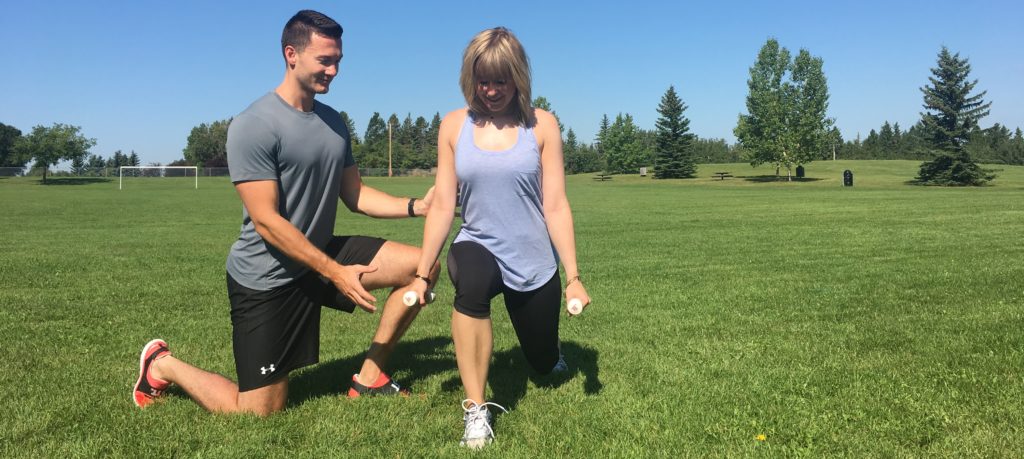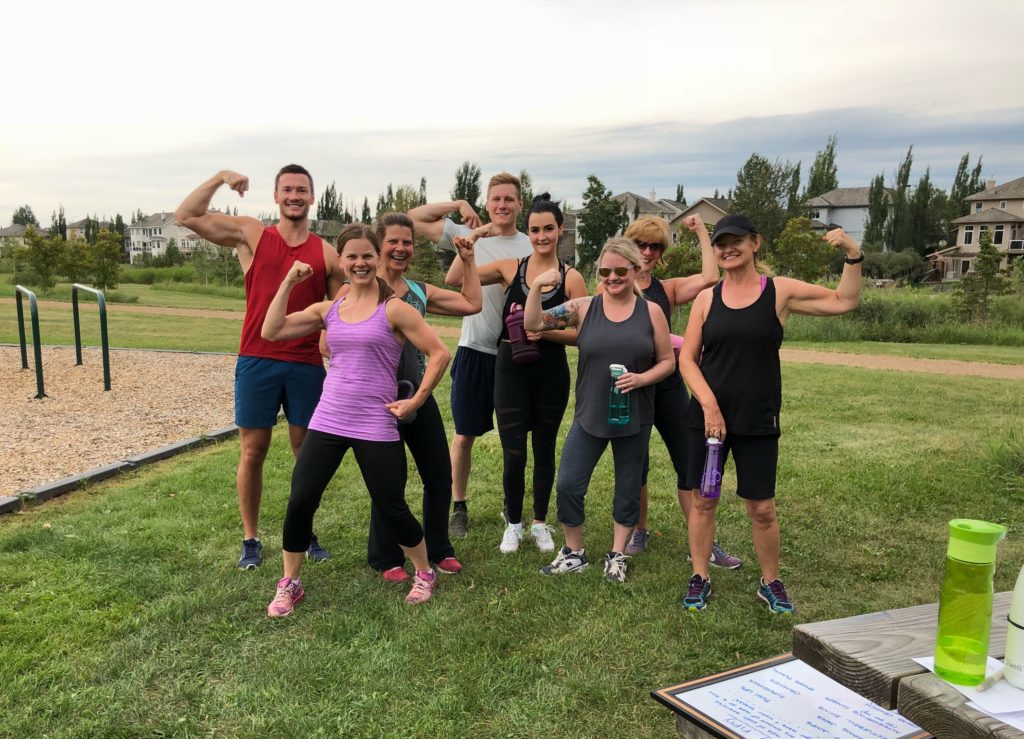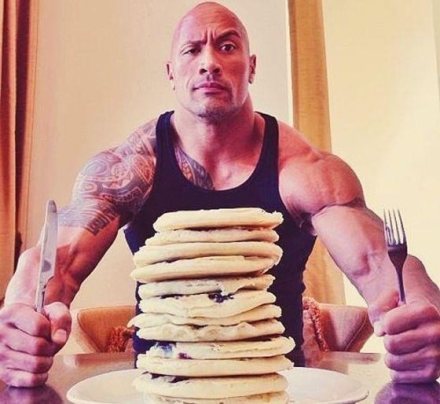Blog
Here are some blog posts about anything fitness related! We cover topics such as weight loss, muscle hypertrophy, strength training, sports performance, nutrition, and anything in between.
Blog
Having a personal trainer would be great and all, but like, that’s so expensive!

Personal growth is something that is sought after by basically all human beings. Whether it be getting smarter, wealthier, and/ or healthier in both a mental and physical sense, people are always looking for ways to improve themselves, and thus their quality of life and standard of living. People are willing to spend exorbitant amounts of money on seeking professional help to accomplish these goals (ie. school courses, counsellors, psychologists, physiotherapists, etc) without even thinking twice about it, yet many people look at having a personal trainer as a luxury expense. Is it?
First off, and to state the obvious, I am biased. Being a personal trainer myself, I definitely believe in the benefits of my profession and how it can help improve one’s quality of life. I am writing this from my perspective, taking into account what I have learned over the years, and what I have seen from people who have hired a personal trainer, whether it be for short term help or for a sustained period of time.
Real talk though; can you do it on your own, without hiring a trainer? Of course! I personally have never hired a trainer for myself, and I figured it out on my own. The thing is, I spent years researching, studying, and perfecting my workouts for my specific goals. My life has revolved around health and fitness for the last 15 years. My competitive speed skating background was my first taste of training that subconsciously taught me about workout periodization, macro- and micro-cycles, different training variables and how to specifically train them, and the determination and self-accountability needed to reach my goals. Coaching high performance athletes allowed me to delve deeper into training and fitness and continue learning the specifics of training and how different training can elicit different results. And my own research and trial and error approach involved with my personal fitness goals aided in expanding my knowledge. So ya, I “figured it out on my own”, but it took years to learn what I have so far, and I’ve only just scratched the surface of it all myself!
That’s the best part about having a personal training – they take the guess work out. You tell them your goals and what you want to accomplish, and they use the knowledge they’ve acquired from years of studying to build you a plan to accomplisht these goals. The only thing you have to do is actually show up and do the work! Which leads me ot my next benefit of having a trainer…
A trainer helps to keep you accountable. One of the hardest parts about training is just making it to the gym; once you’re there, you may as well work out! Having a specified appointment with someone can be just what you need to get your butt there and commit to your goals. I’ve had plenty of clients that, once at the gym, are totally motivated and able to work out, but they just need someone to actually get them there. And having someone design a program tailored for their needs help as well.
Some people are able to self-motivate, while others have trouble finding motivation or staying motivated for their workouts. A personal trainer is also there to help with motivation. They are able to manipulate programs to keep them as fun and enjoyable as they could be, as well as provide encouragement to aid in enjoyment. Working out is hard, but it doesn’t have to be hated.
So, long story short – do you need to hire a personal trainer to reach your fitness goals? Of course not. Do you need to hire a mechanic to work on your car? An accountant to look after your finances? A realtor to sell your house? No, but most people do because they don’t have the knowledge to do these tasks on their own, so hiring a professional helps make sure the job gets done properly as well as quickly.
Fitness has changed a lot over time. What exercises people do, the reps and sets used, and even how people work out. Lately, there has been a huge push in group training. Orange Theory, World Health, Goodlife, and basically every gym with the space and membership numbers offers some form of group training. As a trainer, my group training sessions are some of my most fun sessions. It’s as much a social event as it is an exercising event. But what’s so good about group training?

I think the number one aspect that people like about group training is that you get to work out with friends. Exercising by yourself can be daunting, but having a friend (or multiple friends) around makes it more of a hang-out session instead of a super-serious workout. You get to laugh with each other, complain about the exercises, and enjoy the benefits that come from exercising.
On a similar note, there is also inclusion of some friendly competition. When you work out alone, there is no one there to push you as you go, and you may find that your motivation waivers as the workout progresses. In a group training setting, there are other people around that are there to motivate you. When you are getting tired, seeing someone else pushing through to finish a set/ rep/ session can be all the motivation you need to dig deep and keep going.
Another benefit of group training is that it can give you a reason to get together with friends. Everyone has enough to keep their own personal plates full (work/ kids/ travel/ significant other) and as such, sometimes seeing friends falls on the backburner. Being part of a group training program gives you a scheduled time to see and hang out with your friends while simultaneously getting a workout in!
One scary part about group training is – what if I’m not fit enough to keep up with the group? I don’t want to hold everyone back and embarrass myself! Well, most group training programs are set up in a way that everyone is able to push themselves as much as they want. It’s not about seeing who’s first done and who’s last; it’s about allowing everyone to get a workout in in a safe and welcoming environment.
There are plenty of places that offer group training. As mentioned above, Orange Theory specializes in group training workouts, World Health has their Team 45 workouts, and even Suggy Fitness likes to partake in group workouts in the summer!
If you’re interested in joining us for some group training this summer, feel free to check out our Group Training page, specifically our summer bootcamp section! We offer fun and effective workouts once a week all summer, aimed at all ability levels!
As a trainer, I implement resistance training into every single one of my clients’ programs. Whether their goals are gaining muscle, losing fat, or improving their overall health, resistance training can help. However, I always get asked a few questions in regards to resistance training – Am I going to get too bulky? How does lifting weights help me burn fat? What does weighlifting have to do with improving my heart and body functioning? If you’ve ever asked these questions, then this post is for you.

First off, I should clarify what resistance training is. Resistance training is exactly what it sounds like – any form of exercise that has you working against an external resistance. It involves the contraction of your muscles to move the external resistance, and usually the overall goal is to increase muscular strength, power, and/ or endurance.
When you think of resistance training, do you think of Arnold Schwarzenegger in his heyday, flexing his massive muscles? Well it’s true, Arnold did get to that place by using resistance training, but there is a lot more than just resistance training that got him to that level. Everyone that performs resistance training will not achieve the same results; it all depends how you train, what rep/ set/ rest counts you use, and how you eat.
Speaking of different training for different results, let’s get back to those questions mentioned at the beginning…
First off, will resistance training make you bulky? Short answer, no. Not if that is not what you want to happen. Depending on your training variables, resistance training can be used to improve strength, hypertrophy (muscle size), power, and/ or muscular endurance. For the most part, I find women shy away from resistance training because they don’t want to get big giant muscles and look “manly”. Well, believe me sister, I have been trying to get big giant muscles for over 10 years and I still don’t have them! Just because you are doing a barbell overhead press doesn’t mean that your shoulder muscles are going to be stretching out all your shirts and you won’t be able to fit through doorways. In fact, doing these exercises gives women the exact look they want – toned muscle. Fun fact: did you know that “muscle toning” isn’t actually a thing? All it means is strengthening a muscle while also reducing the fat around it. Looking “toned” means seeing the muscle definition underneath the fat. You need to build these muscles up so that you can see the definition, and how do you do that? That’s right, resistance training!
On the same note, resistance training can also aid in fat loss. Fat is an energy source for your body, and so when you eat excess calories, your body stores it as fat so that it has energy sources to take from when food isn’t readily available. Your body uses carbs as easily accesible energy, and once the carbs are used up, it taps into your fat stores. So how does resistance training burn the fat? Well, you break down the muscle tissue when you work your muscles, and then while you recover, your body undergoes protein synthesis to repair and build new muscle. It takes energy to both break the muscle down and build it back up. This means that your body needs a prolonged source of energy to facilitate these functions, and where does it get this prolonged energy? Fat. So when you hit a killer leg day full of squats, lunges, leg extensions and hamstring curls, your body will burn fat to facilitate the muscle breakdown and subsequent muscle synthesis over the course of the next 36 hours.
So resistance training can get you looking toned and lean, but what about your overall health? How does it keep you healthy?
One of the best aspects of resistance training is that it helps prevent and/ or combat osteoporosis. Mostly seen in older individuals, osteoporosis is the breakdown of bone. Resistance training helps increase bone density by putting stress on the bones, causing the body to send calcium to the affected areas to keep the bones strong to withstand the stress. Also, resistance training helps with heart functioning by strengthening the heart and increasing the functionality of the blood vessels. When your muscles are being worked, your heart must beat stronger and quicker to increase blood flow, and the blood vessels must expand to allow for greater flow to the muscles. By training the muscles, you are also training the heart to adjust to these stresses. And lastly, resistance training helps increase joint functionality and strength by increasing balance and stability. By strengthening the muscles around joints, you improve their overall functioning by increasing their stability and range of motion, allowing you to be able to squat deeper, bend lower, and reach higher. This will not only help you get more out of your workout, but will also help you in your daily activities where you have to bend down or lift things up.
All in all, resistance training should be included in your workout plan at least once a week. Whatever your goals may be, resistance training can at least play a part in helping you reach those goals, if not being the sole factor to accomplishing what you have in mind.
Have you ever worked up the motivation to actually go to the gym, start working out, and then just find you have no drive to complete the workout and call it a day? Everyone has been there, and everyone will be there again.

Some days, you’re in the zone and are ready to crush a workout, whereas other days, it is a mental battle to get through it all. It takes a lot to be able to set yourself up mentally to go into every workout 100%, but there are many tactics you can use to get there.
As you get tired during your workouts, it’s always important to remember why you’re there in the first place. What is your overall goal? What are your short goals? How is this workout going to help push you towards these goals? Thinking of this can definitely help push you through your workout and keep you on track.
On the same sort of note, it’s also important to remember how far you’ve come, and why you’ve come so far! Think of where you were when you started, and how much progress you’ve made on your fitness journey. You got there from putting in hard work, day in and day out. You know that some days it sucks, but, as they say, no pain no gain! Working out is not easy, but that’s the point. So your current workout may be a pain in the ass (literally and figuratively), but keep pushing because it is worth it!
Another way to help you get through your workout mentally is to remember that you don’t have to do any one exercise. If you are doing barbell rows and realize you really struggle with completing them because you just downright hate them, then switch it up! There’s T-bar rows, dumbbell rows (single arm and double arm), machine rows, lat pulldowns, pull-ups, and more! Don’t feel like you’re trapped into doing one specific workout because you saw someone on Instagram doing it; find exercises that you actually enjoy so that you will want to do them.
One of the best methods to pump you up and keep you motivated through your workout is music! Pump-up music has been scientifically proven to raise one’s heart rate and cause mental stimulation. Find some tunes that really get you amped up, and allow them to get you in the zone for your workout. Whether it be AC/DC, Lady Gaga, Weird Al, or the BeeGees, if it gets you amped up then you’re set.
Lastly, find a time of day that works best for you. Are you a morning person and find that exercise really gets you going for the day? Get your workout in before work. Are you a night owl and stay up pretty late? Head to the gym later in the evening. Do you find that you want to work out but once you’re home from work, you don’t want to do anything anymore? Make it a habit to go to the gym on your way home from work. It doesn’t really matter when you work out, just that you do work out.
All in all, everyone is different and finds different ways to motivated themselves. There are so many different ways to mentally stimulate yourself to give it your all, so find what works for you and you’ll be golden!
When people think about fitness and reaching their goals, they go directly to the time spent in the gym. And it’s true, working out definitely burns calories, and resistance training can facilitate both fat loss and muscle growth. But exercising is only half the battle. The other half: diet.

Diet plays a key role in health and fitness. It is the fuel for your workouts, the solution to weight increases and decreases, and the defining factor in your overall body composition.
When you hear about diet and body weight, you always hear the dreaded “C” word – calories. But calories are not a bad thing! In fact, “calories” just means a unit of energy. When you intake more calories than you burn, you put on weight. When you intake less calories than you burn, you lose weight. Simple as that.
The tricky part is figuring out your total daily energy expenditure (TDEE), which is a fancy way of saying the base amount of calories you need to function in your daily life. If you then consume more calories than your TDEE, you will increase your weight, and vice versa. A quick google search will help you find an easy TDEE calculator.
But where do calories actually come from?
Calories come from macronutrients, which are carbs, fats, and protein. That’s it. The amount of calories in foods and drinks is based solely on its composition of carbs, fats, and proteins. Micronutrients and vitamins are important for your health, but have nothing to do with calories and caloric intake.
What’s even more confusing is that not all macronutrients have equal calorie levels. A quick rule of thumb is this:
1g of carbs = 4 calories
1g of protein = 4 calories
1g of fats = 9 calories
So foods with higher fat content will have more calories, gram for gram. Once you figure out your TDEE and start planning your meals, you need to be fully conscious of what the foods that you’re eating are, and the breakdown of macronutrients in it. It’s not just about eating a 50g bowl of cereal with 250ml of milk, but deciphering what that 50g consists of in terms of carbs/ fats/ protein, and what fat percentage the milk is. 250ml of skim milk will have a different calorie amount than 250ml of 2% milk.
Your macronutrient intake and lifestyle also affect your hormone levels, which in turn can affect how hungry you are. There are many hormones that affect how your body works and functions, but 2 of those hormones are called leptin and ghrelin, which affect your hunger levels. Leptin inhibits hunger, and ghrelin increases hunger. Different types of food help to regulate leptin and ghrelin levels, so it is important to keep this in mind when formulating where you get your macronutrients from.
Just as there is so much variability in how one exercises and “works out”, there is so much variability in “diet”. Eating for your goals is very important, and finding a breakdown of macronutrients that fits with your body is a huge part of actually reaching your fitness goals. There is so much to learn about how diet affects weight loss and gain, but having an understanding of macronutrients and calorie levels gives a great starting point to lead you on your way.


